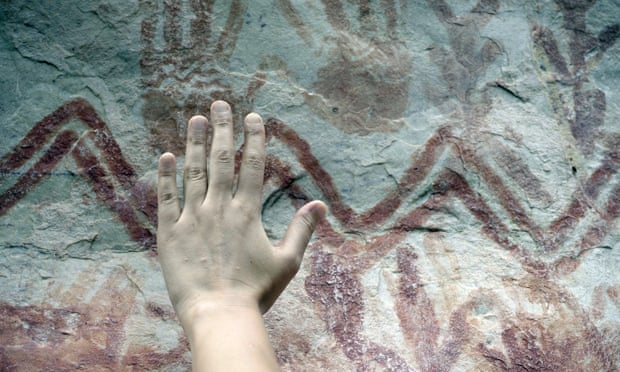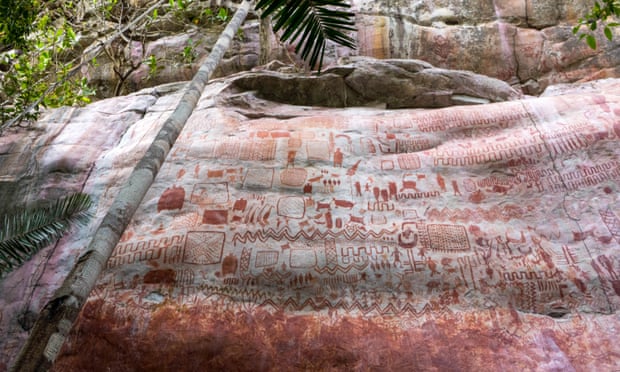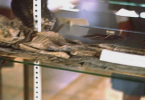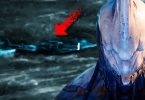These are tens of thousands of cave paintings made in the middle of the Ice Age along a cliff 12,500 years ago. They show various scenes of people and animals.
One of the largest collections of prehistoric rock art in the world has been discovered in the Amazon rainforest. Called the “Sistine Chapel of the ancients,” archaeologists have found tens of thousands of paintings of animals and humans created up to 12,500 years ago on cliffs that stretch for more than 12 kilometers in Colombia.
His date is based in part on his depictions of now-extinct Ice Age animals, such as the mastodon, a prehistoric relative of the elephant that has not roamed South America for at least 12,000 years. There are also images of the paleolama , an extinct camelid, as well as giant sloths and horses from the Ice Age.
These animals were seen and painted by some of the first humans to reach the Amazon . His images give a glimpse of an ancient lost civilization. Such is the magnitude of the paintings that it will take generations to study them.
The discovery was made last year, but has been kept under wraps until now, as it was filmed for a major Channel 4 series that will screen in December: Jungle Mystery: Lost Kingdoms of the Amazon .
The site is located in the Serranía de la Lindosa where, along with the Chiribiquete National Park, additional rock art has been found. The host of the documentary, Ella Al-Shamahi , an archaeologist and explorer, told Observer:
“The new site is so new they haven’t even given it a name.”
Al-Shamahi referred to the thrill of seeing “impressive” images that were created thousands of years ago.

Ella Al-Shamahi, explorer, paleoanthropologist, evolutionary biologist, and comedian. Credit: National Geographic Society
The discovery was made by a British-Colombian team, funded by the European Research Council . Its leader is José Iriarte, a professor of archeology at Exeter University and a leading expert on Amazonian and pre-Columbian history.
Al-Shamahi said:
“When you are there, your emotions flow… We are talking about several tens of thousands of paintings. It will take generations to record them… Every turn you make is a new wall of paintings. We start to see animals that are now extinct. The images are so natural and well done that we have little doubt that you are looking at a horse, for example. The ice age horse had a wild and heavy face. It is so detailed that we can even see horse hair. It is fascinating.”
The images include fish, turtles, lizards and birds, as well as people dancing and holding hands, among other scenes. One figure wears a mask that resembles a bird with a beak.
The site is so remote that, after a two-hour drive from San José del Guaviare , a team of archaeologists and filmmakers walked for about four hours.
Somehow they avoided the most dangerous animals in the region. “Alligators are everywhere, and we were on the lookout for snakes,” Al-Shamahi said.
As the documentary points out, Colombia is a land torn apart after 50 years of civil war between the FARC guerrillas and the Colombian government, now with an uncomfortable truce. The territory where the paintings have been discovered was completely off-limits until recently and still requires careful negotiation to enter safely.

Al-Shamahi said in a statement:
“When we entered the FARC territory, it was exactly how some of us have been shouting for a long time. The exploration is not over. Scientific discovery is not over, but great discoveries will now be found in disputed or hostile places. “
Paintings of various sizes and at great height
The paintings vary in size. There are numerous handprints and many of the images are on that scale, be they geometric, animal or human shapes. Others are much larger.
Al-Shamahi was surprised by how tall many of them are: “I am 1.64 cm tall and I had to bend my neck a lot to look up. How did they climb those walls?
Some of the paintings are so tall that they can only be seen with drones.

Iriarte believes the answer lies in the representations of wooden towers among the paintings, including figures that appear to bungee jump from them.
Iriarte said:
“These paintings have a reddish terracotta color. We also found pieces of ocher that they scraped to make them ”.
Speculating on whether the paintings had a sacred or other purpose, he said: “It is interesting to see that many of these large animals appear surrounded by small men with their arms raised, almost worshiping these animals.”
Noting that the images include hallucinogenic trees and plants, he added: “For the Amazonian peoples, non-humans, like animals and plants, have souls, and they communicate and relate to people in a cooperative or hostile way. through the rituals and shamanic practices that we see represented. in rock art ».
Al-Shamahi said:
“One of the most fascinating things was seeing the megafauna from the Ice Age because it is an indicator of time. I don’t think people realize that the Amazon has changed in appearance. It has not always been this rainforest. When you look at a horse or a mastodon in these paintings, of course they were not going to live in a forest. They’re too big. Not only are they giving clues as to when they were painted by some of the first people, which in itself is just mind-boggling, but they are also giving clues as to what this very place could have been like: more like a savanna. “
Iriarte believes that there are still many other paintings to discover: “We are only scratching the surface,” he said. The team plans to return as soon as the pandemic allows.
There is no doubt that the Amazon hides a huge ancient treasure left by very little documented civilizations, which lived in an environment very different from what we see today in the jungle of this part of the world.
Top Image: Tens of thousands of ancient paintings were found on a wall that spans more than 12 kilometers. Credit: Ella Al-Shamahi







